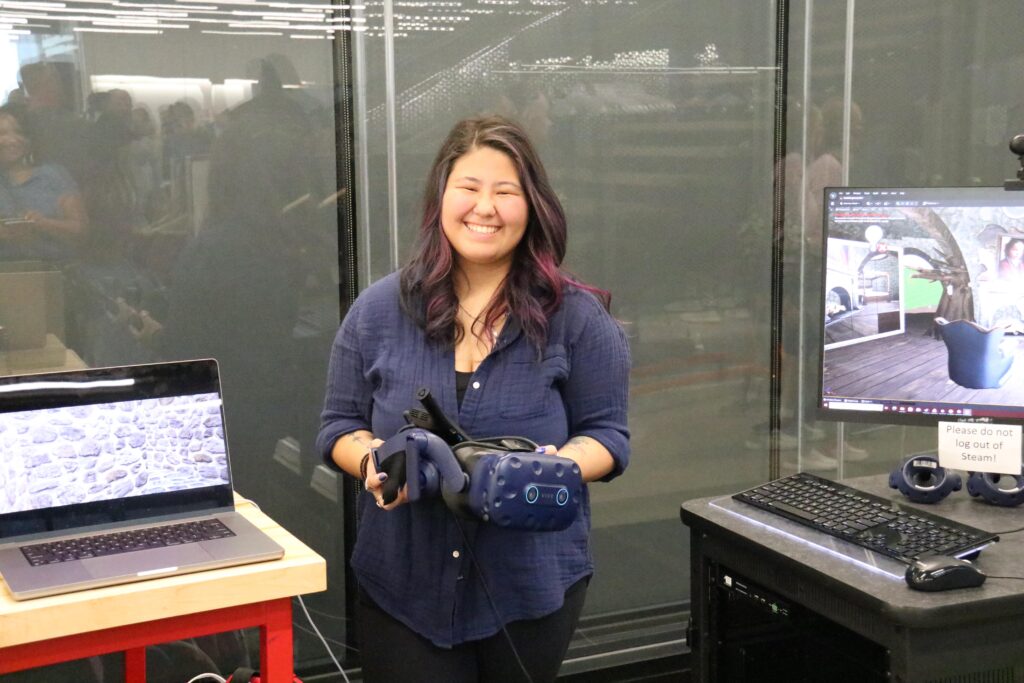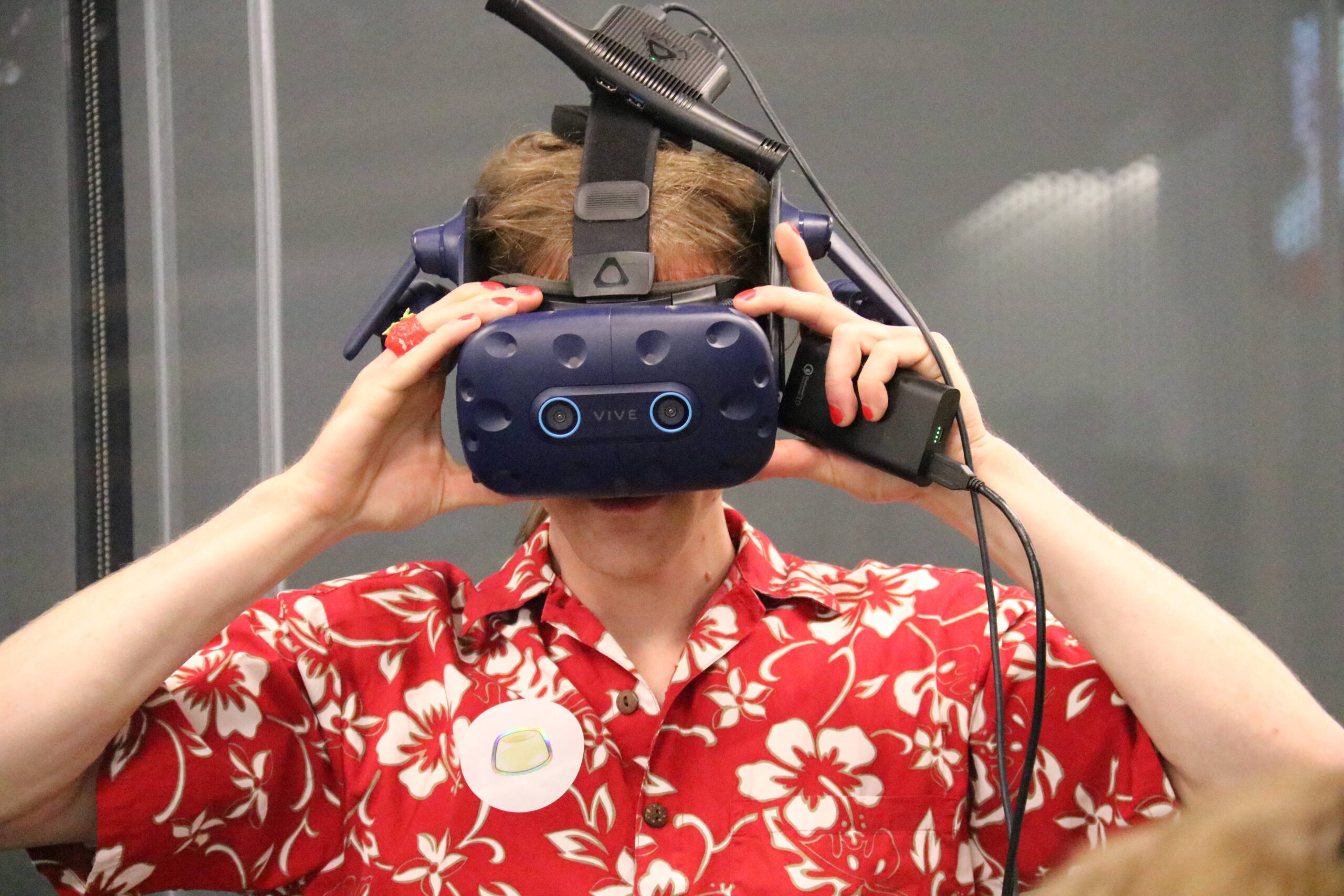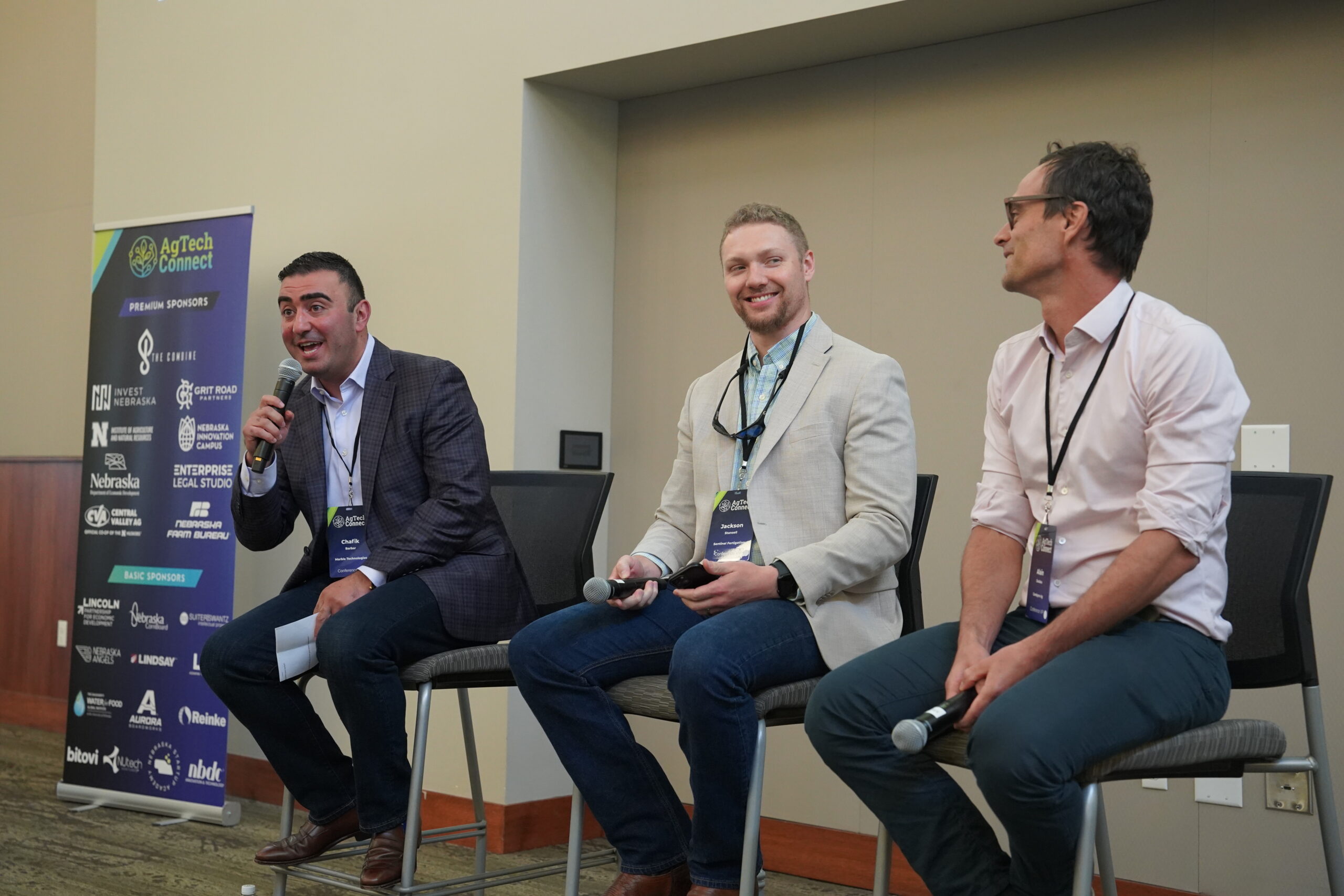The first four-year cohort of students are graduating this week from the Johnny Carson Center for Emerging Media Arts at the University of Nebraska-Lincoln.
These students are graduating equipped with the skills to navigate ambiguity in a way that will help them tackle challenges they don’t even know they will face, said Megan Elliott, the Johnny Carson endowed director in Emerging Media Arts. The agility they have demonstrated in dealing with a pandemic in their first year, working with rapidly evolving generative A.I. in programs like ChatGPT and co-creating a program alongside the faculty, will help them address the technology questions of the future, she said.
And their entry into the workforce couldn’t be more timely considering the questions that surround emerging technologies like A.I. and its impact on society. OpenAI CEO Sam Altman recently testified in front of Congress about the need for regulation in the industry in order to avoid future catastrophe.
Elliott moved from Sydney, Australia, to Lincoln to become the founding director of the Carson Center for Emerging Media Arts at UNL, which she described as a “once in a lifetime opportunity.”
BECOME A SPONSOR
Join us in championing the narrative of success, resilience, and ingenuity that defines Nebraska’s startup community. Learn more »
Elliott said the emerging media arts students have been trained “to look at what’s happening now and next, and to create something in an age of intelligent machines.”
“When I started to talk like that in 2017, it was like, oh yeah, there’s A.I., but we’ve seen even since the launch of ChatGPT-3 last year just how fast this technology is moving.”
The Carson Center for Emerging Media Arts offers specializations in areas like augmented reality/virtual reality design, UI/UX, game design and filmmaking.

Graduating senior Aliya Sime created a virtual reality escape room for her capstone project, combining her specializations in virtual reality development and game design. She showcased her project at the Emerging Media Arts Open Studios on May 12. Sime moved from Texas to Nebraska to enroll in the Carson Center for Emerging Media Arts in its inaugural year because it was the most innovative program she encountered during her college search.
“I hadn’t found another program that didn’t feel like it was settling to me.”
Sime, a photographer, knew she wanted to do something creative, but didn’t know exactly what. The chance to delve into emerging media and combine art with technology turned out to be the opportunity she was looking for.
“I learned a lot more than I thought I would coming into this … about myself and what I want to do,” she said. “This program was fantastic, and people here are fantastic. I think it’s a great program for people that don’t necessarily know what they want to do, but know they want to be in a creative space and artistic world.”
Now Sime is applying for design and 3D modeling roles at companies like Disney and The LEGO Group. She said it’s a competitive field.
“There aren’t a lot of jobs anywhere for this kind of stuff yet.”
Which is why entrepreneurship is one of the main tenets of the program, Elliott said. Her goal is to prepare students to make their own career path by founding their own companies after graduation if they can’t find their dream job.
Elliott said Emerging Media Arts students partner with UNL’s College of Business to build apps and work with folks in the business community to hone their entrepreneurial skills.
Other career paths include ethical technology advocate and activist. Which is especially relevant considering Altman of OpenAI’s congressional testimony this week.
It’s impossible to predict where technology will go in the future. But it is possible to train students to think critically about emerging technologies and how to leverage them in a safe, effective and ethical way.
“That technology is actually embedded into many of the things that you’re seeing (in students’ final projects) and these students are really grappling with things as they’re being created.”
More About The Johnny Carson Center for Emerging Media Arts
The Johnny Carson Center for Emerging Media Arts aims to prepare students for the rapidly evolving landscape of media arts and empower them to become innovative creators and leaders in the field. It provides a cutting-edge educational environment where students can develop their artistic vision and technical skills while exploring the potential of emerging technologies in storytelling and communication.
The center aims to foster creativity, innovation and collaboration in emerging media arts, which encompass a wide range of disciplines such as film, video, interactive media, virtual reality, augmented reality, game design, animation and more. It offers a curriculum that combines theory and practice, emphasizing hands-on learning, experimentation and interdisciplinary approaches.
The center collaborates with industry professionals, artists, researchers and scholars from diverse fields to create a vibrant and dynamic environment for students. Through partnerships and internships, students have the opportunity to gain real-world experience and connect with professionals in the media arts industry.
The vision is to “become the premier destination in the world for creative, young pioneers who use technology to innovate, to solve humanscale problems, to entertain audiences and to tell breathtaking stories that stimulate, provoke and inspire,” according to its website.




